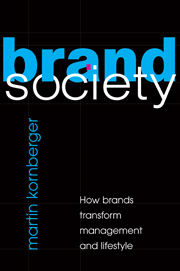9 - Aesthetics
Published online by Cambridge University Press: 10 January 2011
Summary
Large Glass
Marshall McLuhan proposed to understand art as ‘exact information of how to rearrange one's psyche in order to anticipate the next blow from our own extended faculties’. Indeed, art did prepare us for what was about to come. At the beginning of the twentieth century, artists in Paris and New York were exposed to the golden days of the machine age. While impressionists had deconstructed the world, and expressionists decentered the subject, Picasso was about to break up both in favour of assemblages. But nobody else would come close to one artist's diagrammatic yet precise anticipation of the brand society as Marcel Duchamp. Duchamp was obsessed with machines. His early works such as Coffee Mill (1911) or Chocolate Grinder (1914) resemble product descriptions of machines: they do not show (however distorted or abstracted) objects or forms but describe a mechanism. These paintings show how things work: they explore machines that produce; they are diagrams of production. This approach reflected (quite literally) the daily grind of a society that had turned itself into industrial mass-production mode.
Duchamp's Nude Descending a Staircase (1912) was born out of the same zeitgeist as the motion studies of Étienne-Jules Marey's photographic analysis of movement of people, birds or a galloping horse. Marey quite literally shot his ‘animated zoo’ with a photographic gun that would inspire the motion studies of Frank B. and Lillian Gilbreth and, later, Frederic W. Taylor's Scientific Management. For Duchamp, this was only half of the truth.
- Type
- Chapter
- Information
- Brand SocietyHow Brands Transform Management and Lifestyle, pp. 236 - 262Publisher: Cambridge University PressPrint publication year: 2010

